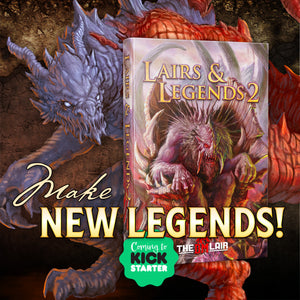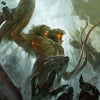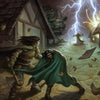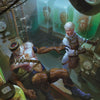What everyone gets WRONG about storytelling in D&D
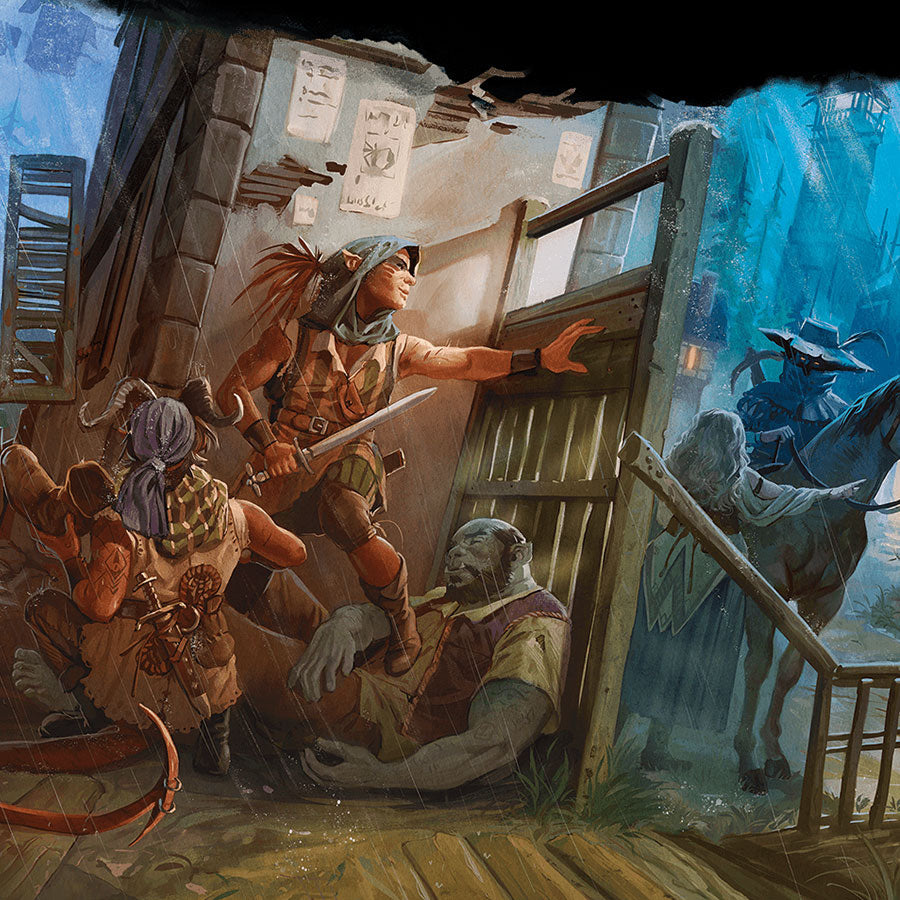
Written by Luke Hart
What does it really mean to be a storyteller in Dungeons & Dragons? Many Dungeon Masters fall into the trap of thinking they must control every beat of the narrative, crafting a rigid plot from beginning to end. But D&D isn’t about writing a novel—it’s about creating a shared storytelling experience where players shape the journey just as much as the Game Master does.
In this article, we’ll break down the true role of the GM as a plotter, director, and editor—not the sole author—and how understanding this distinction leads to more engaging, collaborative, and unforgettable adventures. If you want to level up your storytelling and empower your players, this one’s for you.
By the way, are you a NEW GAME MASTER feeling a bit overwhelmed by everything involved with running a role-playing game? If so, the Secret Art of Game Mastery can help. Get over 100 years of GM experience distilled into practical, easy-to-read advice.
Watch or listen to this article by clicking the video below.
Now, many times you will find that the game master is misconstrued as “the Storyteller.” And to be fair, there are indeed some game masters who take on the role of storyteller and essentially try to “write a book” with their games. They are quite literally seeking to tell a specific story with a planned beginning, middle, and end.
The problem with this is that it transforms the game into an unyielding narrative that the players have very little to no control over. These Game Masters often steal their players of agency and their ability to affect the story in any meaningful way.
Needless to say, you don't want to be that Game Master.
I have always firmly believed that in a TTRPG, all the players tell the story and, therefore, they are all “Storytellers.”
However, yes, the Game Master almost always takes the lead, crafting the world and situations that enable the players to tell their characters’ story. So, I submit to you that the Game Master is in fact taking on the role of LEAD Storyteller, or to put it in cinematic terms the role of the Director. Even though in this capacity the Game Master is more of a Plotter, Director, and Editor, than a pure director.
But the Game Master is not really a Director in the cinematic sense. In movies and TV, the director knows the story and tells the actors how to portray their characters, what emotions to show, what actions to take, where to stand, where to go, and so forth.
However, in a TTRPG, the players aren’t just actors, and their characters aren’t just parts they’re playing. You see, players invest time into their characters, and they’re the ones who choose how they act, where they stand, and what they do.
So, in what sense is the Game Master more of a “Plotter, Director, and Editor?” We’ve talked in the past about how the Game Master is the Worldbuilder, Designer, and Arbiter, and each of these roles informs some part of the game master’s role as Director.
As worldbuilder and designer, the Game Master becomes the Plotter/Director. The design of the game world—which the GM is almost always responsible for—may lend itself to certain types of stories, events, and situations.
Furthermore, when the Game Master designs an adventure, they decide the premise, backstory, and what the current situation is. The Game Master interprets the story’s framework as maps, creatures, a hook, treasure, and stakes. By setting up the adventure in this way, the Game Master INITIATES the act of storytelling, and then the players and their dice control how the story unfolds within the adventure.
And as arbiter—that is the referee or judge—the Game Master is also Director and Editor, controlling the actions and reactions of the world within the context of that story. The Game Master arbitrates the rules, makes decisions for the NPCs, and determines the timing of the various elements of the game as the story unfolds.
It is the game master, not the players, who decides the “something” that is happening, the goals and motivations of the “bad guys,” and the structure of the locations and any related hazards or complications. By deciding how those hazards, bad guys, and other NPCs think, act, and behave in response to the characters’ actions, the GM unquestionably impacts the direction of the characters’ story.
However, once the Game Master has set the adventure in motion, this input best serves the story when it is in REACTION to something the characters say or do. The GM should not use their power or abuse their role to make decisions for the players.
But there is more to being the Director than just how those previous roles contribute to it. In addition to putting things in motion and “being the world,” the Game Master also directs the story. You see, the Game Master is the only player who really knows everything that’s going on. And because they don’t know everything, players will occasionally get into a lurch or lull or head in the wrong direction.
It’s in those moments that the Game Master needs to ensure that the players’ characters are “on the right track” so that they can find a satisfying end to their story... even if that end is a painful one, such as a TPK or other failure state.
I submit to you that the worst ending to a story is not a TPK or a failure. The worst ending is the ending that never happens. A story that is left hanging. A story in limbo.
Furthermore, the Game Master needs to maintain the pacing of the story to keep the players from getting bored or frustrated. When the players find themselves in one of the aforementioned lurch or lull, the Game Master should provide some relief.
If the players have stalled because they are missing a clue or don’t have a clear direction, the Game Master should introduce some element that gives them what they need to get moving again.
If the players are floundering in a lull because they have too much information or because they’re overplanning (also known as “analysis paralysis”), the Game Master needs to step in and either help them narrow their focus or just help them realize that they’re overthinking things.
And sometimes, sometimes, the Game Master just needs to inject some action to shake things up and get the players motivated to get moving. This is often referred to as the “Orcs attack!” method of getting things back to the action.
So, the Game Master set things up, puts them in motion, and keeps them in motion. The Game Master determines the overarching plot, the stakes, and the rewards or consequences, but the players fill in the details.
You see, the game is a shared, collaborative storytelling experience, and the Game Master leads that story and directs the action. When a Game Master understands this, and endeavors to frame the game in that way, it provides a more immersive, enabling, and entertaining game experience for both the players and GM alike.
100 Years of GM Experience at Your Fingertips!
Are you a NEW GAME MASTER feeling a bit overwhelmed by everything involved with running a role-playing game? Are you a VETERAN GAME MASTER looking for new tips and tricks to take your games to the next level? Look no further than the Secret Art of Game Mastery.
We at the DM Lair have distilled our CENTURY of accumulated GM experience into an easy-to-read guide of practical advice that you can immediately apply to your games! We've even included our own templates–the things that we use to prepare our ACTUAL games.
Get all three books to master your game:
- The Secret Art of Game Mastery. Contains over 100 years of GM advice distilled into an easy-to-read format. It introduces and explains the tools of the trade, scheduling, playstyle, post-game notes, getting player feedback, and more.
- The Secret Art of Preparation. Brings to your fingertips the actual templates and guides that the DM Lair team uses to prepare games, Lair Magazine, and more. Designed as a three-ring binder, it's intended for you to write directly into for your entire campaign!
- The Secret Art of Notetaking. Gives you the keys to tracking your campaign from session to session just like the DM Lair team. Designed as a three-ring binder, it's intended for you to write in and keep track of your whole campaign!
With so much knowledge and experience on its pages, The Secret Art of Game Mastery is guaranteed to become an indispensable tool for all game masters, new and veteran alike. And if that isn’t enough, the information applies to all game systems and all genres!
-
Posted in
Game Master How-To Articles


